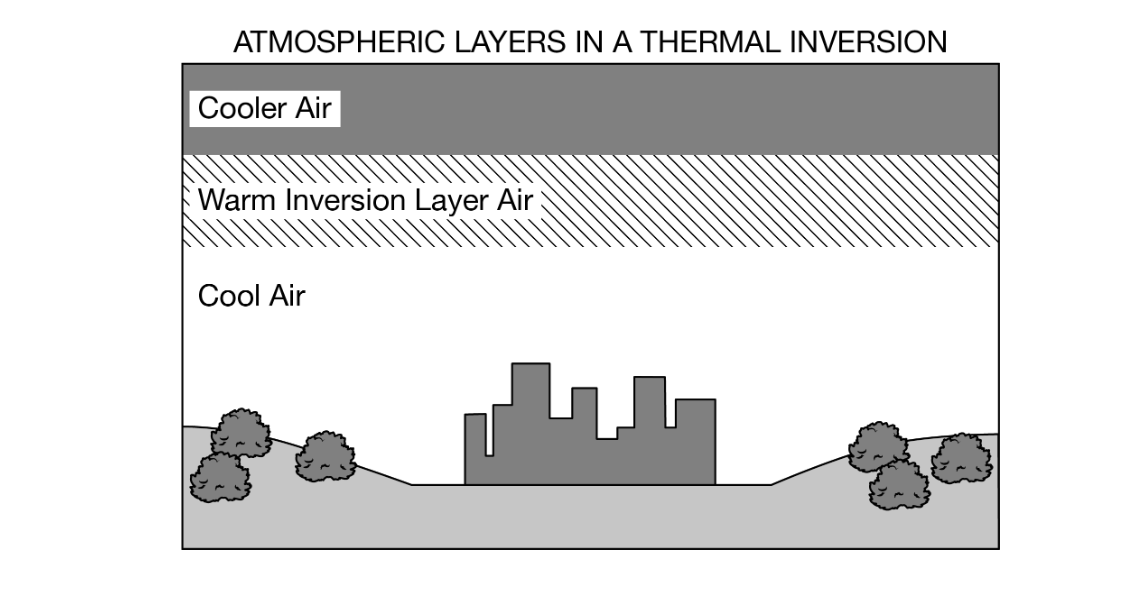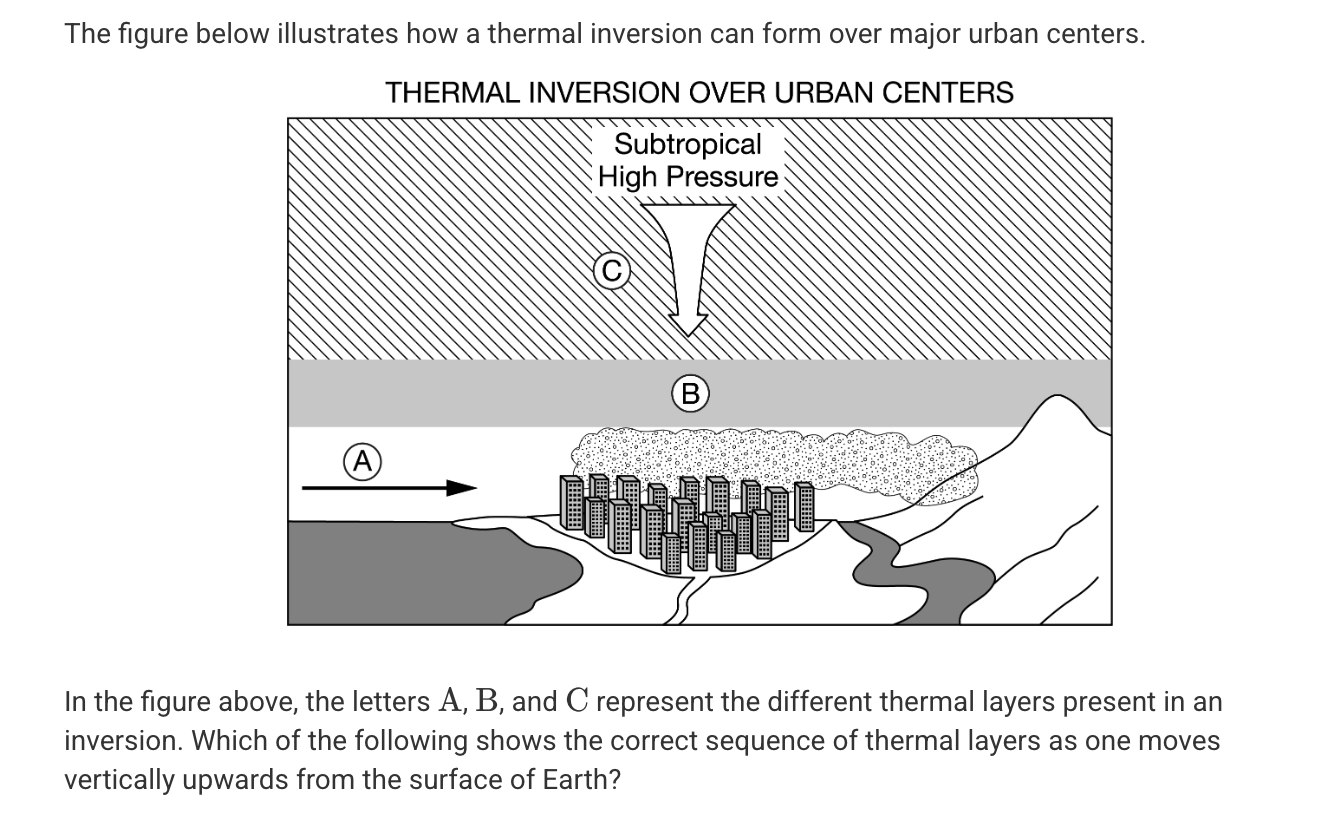Thermal Inversion Quiz
1/3
There's no tags or description
Looks like no tags are added yet.
Name | Mastery | Learn | Test | Matching | Spaced |
|---|
No study sessions yet.
4 Terms

Based on the layers in the diagram, which of the following best explains why a thermal inversion tends to concentrate pollutants in the air layer closest to the Earth’s surface?
A) The air layer that is the second closest to the Earth’s surface is less dense than the layer above it.
B) The inversion layer is warmer than the air layer that is farthest from the Earth’s surface.
C) The air layer closest to the Earth’s surface is denser than the layer above it.
D) The air layer that is farthest from the Earth’s surface contains the coolest air.
C) The air layer closest to the Earth’s surface is denser than the layer above it.

If the air layers in the diagram were relabeled to illustrate normal atmospheric conditions, the correct labeling from the air layer closest to the Earth’s surface to the one farthest from the Earth’s surface would be
A) cool air, cooler air, warm air
B) warm air, cool air, cooler air
C) cooler air, warm air, cool air
D) cooler air, cool air, warm air
B) warm air, cool air, cooler air

Which of the following shows the correct sequence of thermal layers as one moves vertically upwards from the surface of Earth?
A) Warm sea breeze Cool Warm
B) Warm sea breeze Warm Cool
C) Cool sea breeze Warm Cool
D) Cool sea breeze Cooler Coolest
C) Cool eesea breeze Warm Cool
lol
lol